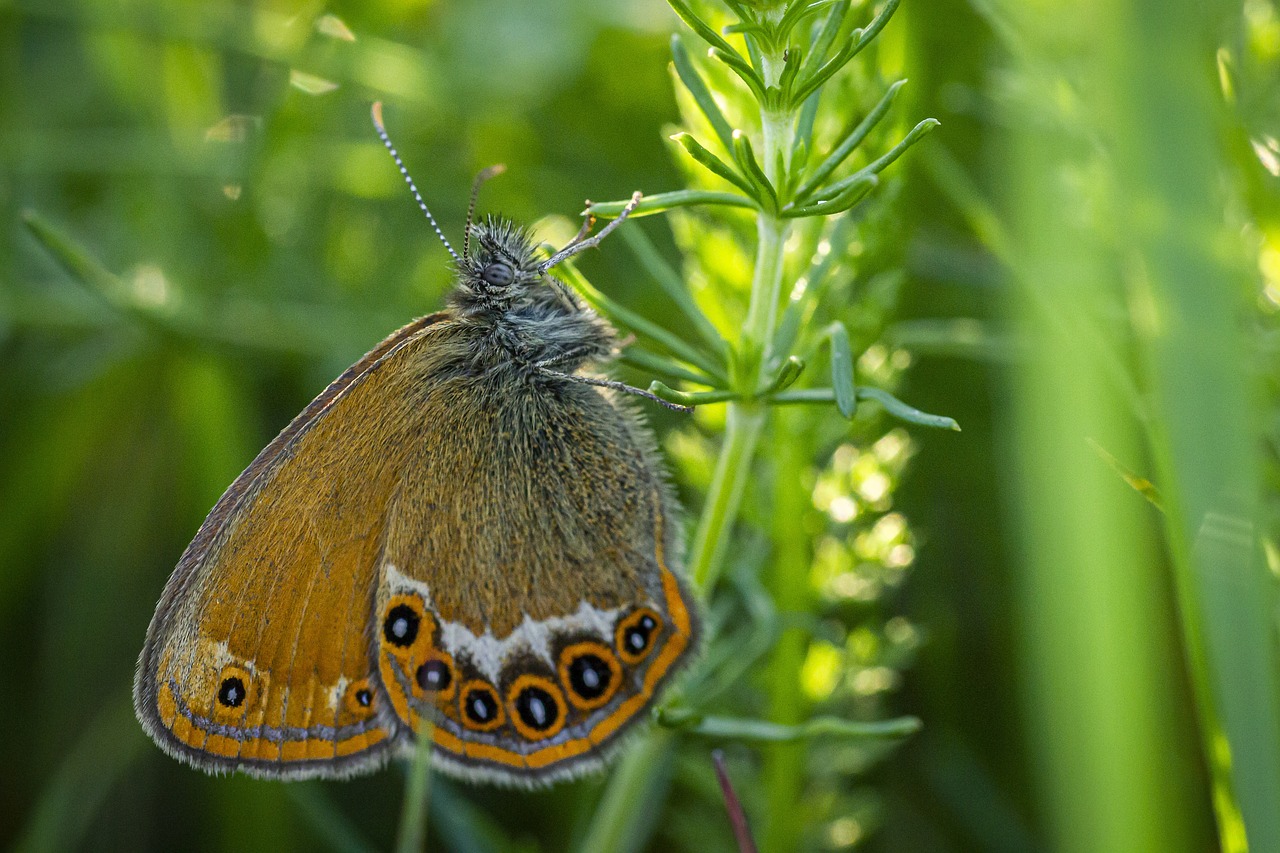The Scarce Heath (Coenonympha hero) is a species of butterfly belonging to the Nymphalidae family. Here’s a detailed description:
- Appearance: The Scarce Heath is a relatively small butterfly with a wingspan ranging from 28 to 34 millimeters. It has a distinctive appearance characterized by its brown wings with orange markings. The upper side of the wings of the male butterfly typically features a broad, orange-brown band, while the female’s wings are usually more uniformly brown with less distinct markings. Both sexes have small black spots along the wing margins.
- Habitat: This butterfly species inhabits a variety of open habitats, including heathlands, moorlands, grasslands, and meadows. It tends to favor areas with abundant vegetation and flowers, where it can find suitable nectar sources and breeding sites.
- Range: The Scarce Heath is distributed across parts of Europe, including the United Kingdom, Ireland, France, Spain, Portugal, and other countries. Within its range, it may exhibit localized populations depending on habitat availability and environmental conditions.
- Flight Period: The flight period of the Scarce Heath typically occurs from late spring to early autumn, with peak activity during the summer months. Adults can be observed flying low to the ground, often among tall grasses and other vegetation.
- Life Cycle: Like other butterflies, the Scarce Heath undergoes a complete metamorphosis, progressing through egg, larva (caterpillar), pupa (chrysalis), and adult stages. The larvae feed on various grass species, while the adults primarily feed on flower nectar.
- Conservation: In some regions, the Scarce Heath may face threats due to habitat loss, degradation, and changes in land use practices. Conservation efforts may include habitat restoration, management of key plant species, and monitoring of butterfly populations to assess their status and trends.
The Scarce Heath is a captivating butterfly species appreciated by enthusiasts and conservationists for its beauty and ecological significance within its natural habitat. Efforts to protect and conserve its habitats contribute to the preservation of biodiversity and ecosystem health.
Views: 13
Subscribe to the newsletter:
